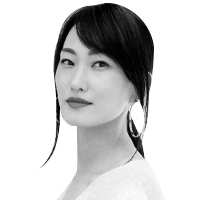TOKYO — The playground is a battlefield in Japan, and if you’re old enough to read, then you might as well learn to fight, or avoid fighting, or run away if there’s no way you can win the fight.
Here, as summer vacation comes to an end, the kids are all scrambling to finish book reports. And this year for enterprising tykes—and their Tiger Moms—or Tiger Dads—there’s a Japanese translation and adaptation of the ancient Chinese strategy book, The Art of War, by Sun Tzu. It’s recommended for kids 6 years old and older.
The editorial supervisor, Takashi Saito, is a professor at Meiji University and an expert on education; he’s also one of Japan’s most beloved authors.
ADVERTISEMENT
The book was released this March, selling out its initial printing of 20,000 copies, and it is now in its third printing. The publisher, Nihon Tosho Center, said that the sales are constant and the public reaction has been unexpectedly good.
Sun Tzu, also known as Sun Wu or Sunzi, was an ancient Chinese military strategist. Details about his background and life are not clear although he generally is thought to have lived during the 6th century BC.
The strategies and tactics he describes in The Art of War have influenced leaders throughout time, including the samurai of ancient Japan and the military of modern Japan. Ho Chi Minh of the Viet Cong and Colin Powell are also said to be fond of the book.
Xinhua News reported that a memorial park for Sun Tzu opened in east China’s Jiangsu province just this year to commemorate his great influence.
The Art of War is well known in Japan, where Sun Tzu is called Sonshi and the book is referred to as Sonshi No Heiho. In the Sengoku era in Japan, the powerful warlord Takeda Shingen was said to have risen to power by using Sun Tzu’s methods. In homage to the military sage, the warlord’s war banner contained the phrase Fuh-Rin-Ka-Zan (Wind, Forest, Fire, Mountain), which illustrates Sun Tzu’s principles of victory: “Swift as the wind, silent as a forest, fierce as fire and immovable as a mountain.”
Of course, we should mention that under Japan’s present constitution, war has been renounced as a means of solving international disputes. But it seems unlikely that the kids reading the book will be inspired to invade Korea; it’s more likely to inspire them to study hard and think before acting.
The children’s version of the book is divided into four sections: winning, making your dreams come true, dealing with adversity, making one more step forward. There is a single bullet point per chapter and cute hand-drawn illustrations. The standard Japanese translation of the original text is included with a rough summary, a detailed explanation, and the lesson to be learned.
Many sayings in the book are already part of the colloquial Japanese language, and some children might delight in knowing where the phrases originally were found.
“100 battles and 100 victories” is a saying in Japan often used to describe the perfect fighter. Ironically, as the book points out, many people don’t know the second half of the phrase, “Rather than win 100 victories in 100 battles, to win without fighting is really amazing.”
It’s a surprisingly peaceful message for a book that’s supposed to be about warfare.
One might think that a lot gets lost in translation from a book that was originally in Chinese and then turned into Japanese at an elementary school level. In fact, it’s remarkably clear-cut advice.
“The greatest victory is that which requires no battle.”
“To face the enemy head first is important. But sometimes you want to try being tactical.”
“Even if you win the battle but fail to achieve your goals, that’s a failure. Don’t forget what you’re fighting for in the first place.”
“There’s such a thing as a meaningful escape. If you can’t win, then run away for the time being.”
“Don’t push the opponent into the wall or too far. Even in winning there must be good manners.”
And there’s some great discouraging advice for the kids considering a schoolyard brawl:
“Every fight comes with danger. Think about what is to be gained and if you’re not willing to shoulder the risk, don’t haphazardly fight.”
The small print explains it in more detail:
“Hey you (kid reading this book), when a friend does something icky to you, do you give way to anger and just fight? If you fight, you might get hurt and they might get hurt too. Friends watching the fight might decide you’re a thug. Compare the danger of battle to the value of what you’re fighting for and then decide on your actions.”
In an article for the Sankei Newspaper, Itsumi Takano, the general editor in charge of the book, explained why it’s a useful text for pre-teens and their parents:
“This abridged version boils down several chapters into digestible chunks of life advice for kids. This speaks for the universality of Sun Tzu’s words which are even applicable to the lives of modern-day children. Kids today go through entrance exam wars and friendships that have become too close. They face struggles that are sometimes beyond what we adults can imagine. We hope that this will also be of use as a guide for fathers and mothers in the midst of raising children.”
In Japan the jukensenso, or examination wars, start as early as pre-school, where students must pass difficult exams to get into “the right” school.
The competition for private junior high school spots is said to be the most fierce. The goal is to navigate the system and get into one of Japan’s elite colleges and have your future assured. And to do that getting into the right schools along the way is of paramount importance.
Hiroko Koyama, 34, who is a housewife and part-time office worker in Setagaya-ku, said she bought the book for her 8-year old son because “He’s a very nice kid but maybe too nice. His friends often talk him into doing silly things and he needs to be able to say, ‘No.’ And study harder. Maybe this book will help him.”
And when pressed, she admits, “Yes, I’m going to read it, too. The entrance exam battles ahead are serious things. It looks like it has good advice.”
I have to admit that I have tried to wade through English translations of The Art of War and never finished. But upon reading the version written for Japanese grade-schoolers—which is about my level of strategic thinking—I was surprised at how useful it was.
The Art of War does have practical advice for all walks of life. (There’s even a version of the book that retools it for dating advice.) Read closely, it’s also a wonderful book on the perils and methods of covering organized crime in Japan aka the Yakuza:
“Even two people who don’t get along can work together if they find themselves on the same boat facing a common danger.”
Yep.
And it could be part of textbook at a J-School:
“People who succeed, treat information with great importance. Be sure to know the correct information even a second faster than anyone else.”
You can see why Japanese parents are buying it for themselves and their kids. Sometimes, a little strategy goes a long way.







